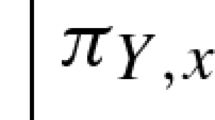Abstract
This paper investigates different readings of plural and reciprocal sentences and how they can be derived from syntactic surface structures in a systematic way. The main thesis is that these readings result from different ways of inserting logical operators at the level of Logical Form. The basic operator considered here is a cumulative mapping from predicates that apply to singularities onto the corresponding predicates that apply to pluralities. Given a theory which allows for free insertion of such operators, it can then be shown that the lexical semantics of the reciprocal expressions each other/one another consists of exactly two components, namely an anaphoric variable and a non-identity statement. This receives further support from the observation that it is exactly these two components that can be focused by only; all that remains to be done is to correctly manipulate these components at the level of LF.
Similar content being viewed by others
Author information
Authors and Affiliations
Rights and permissions
About this article
Cite this article
Sternefeld, W. Reciprocity and Cumulative Predication. Natural Language Semantics 6, 303–337 (1998). https://doi.org/10.1023/A:1008352502939
Issue Date:
DOI: https://doi.org/10.1023/A:1008352502939



